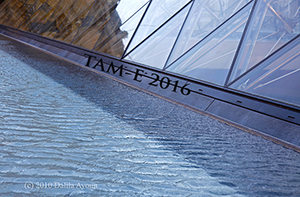There is a well-established series of works treating so called ‘tense-aspect' (T/A) markers as having the ability to yield modal meanings (Damourette & Pinchon 1911; Vet 1983; Iatridou 2000; Cipria & Roberts 2000; Saussure & Sthioul 2005; Brisard 2010; Altshuler 2014), thus ‘blurring the lines' between modal and T/A meanings, by allowing markers single markers to have ‘hybrid/mixed' (and non-composite) TA and modal meanings. See also (Van Linden & Verstraete 2008; Halpert & Bjorkman 2013), where the prevalent cross-linguistic morphological complexity in counterfactual utterances is treated as “illusory”.
Challenging such views on the basis of a sample of morphologically rich languages, comprising Australian and Indo-European languages (notably English, French, German and Russian), we will argue that at least some counterfactual modal meanings are structurally complex and should be construed from morpho-semantically separate T/A and modal ingredients. For instance, in Anindhilyakwa (1), the irrealis inflection semanticall outscopes the TA inflection, as the latter bears directly on the meaning of the ‘be in pain' root (causing a coerced inchoative reading). In contrast, in Murrinh-Patha (2), the irrealis inflexion must scope between the root and the past imperfective inflexion, as the latter rejects telic verbs on its own (Nordlinger & Caudal 2012), i.e. IRR behaves like a modal auxiliary in (2), and the TA meaning bears on IRR. Other related cross-linguistic facts will be here construed into a typology of morpho-syntactic and semantic structures for counterfactuals, at least some of which require autonomous TA and modal ingredients.
(1) Kamvdhakama nvngkakina makina makarda
IRR.veg/2sg-burn/cook.NP1-ma 2sg-that veg-that veg.sea
akwa kvmvrndamardhv-ma nvngk-envng-arngk-awura
and IRR.2sg-all.over-be.in.pain.NP1-ma 2sg-m.alp-times-alone
‘When [the bristleworm] stings you, you will start being in pain.' (Anindhilyakwa) (van Egmond 2012:216)
(2) ku beg mertthaka (Murrinh-Patha) (Nordlinger & Caudal 2012)
NC :ani bag 1sgS.SNATCH(9).PastIrrealis-get-PastImperf-FOC
‘I should have brought my bag.'
- Présentation

 PDF version
PDF version
